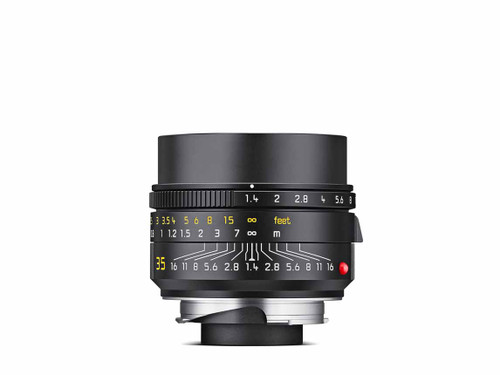Leica Summilux-M 35mm f/1.4
Leica looks back on more than 150 years of experience in optical design. Since then, numerous legendary lenses have been introduced, setting photographic standards and redefining what is technically possible.
One of these iconic lenses returns today: The Leica Summilux-M 35 f/1.4.
The Leica Summilux-M 35 f/1.4. was the world’s fastest wide-angle lens in 1961, distinguished by its compactness while also being extremely light, weighing only 7.05 ounces. Furthermore, this lens provided new creative opportunities with its unique image rendering.
Photographing with a wide-open aperture creates pictures with an especially soft, almost magical bokeh. Its extraordinary rendering earned the Summilux-M 35 f/1.4 the title of “True King of Bokeh”. Photographing at maximum aperture in backlit conditions creates intended lens flares that can be used for specific artistic effects. When stopping down past f/2.8, it produces very sharp and particularly distortion-free pictures which meet modern requirements for image quality.
The new edition is made in the original vintage design and with the identical optical calculation of the first Summilux-M 35 f/1.4. Additionally, the stainless-steel front ring known as “Steel Rim”, the lockable focus ring and the black attachable lens hood are also modelled after the original. What is new, however, is the second round lens hood with E46 thread which enables the use of filters, also included with this lens.
The essentials:
- Original Optical & Product Design with Modern Production Processes
- Stainless Steel Front Ring
- Focus Lock on Focus Ring
- Ultra Compact and Fast Wide-Angle Lens
- True “King of Bokeh” with Iconic Lens Rendering
- Made in Germany
For detailed technical specifications, please refer to the Technical Data Sheet.











